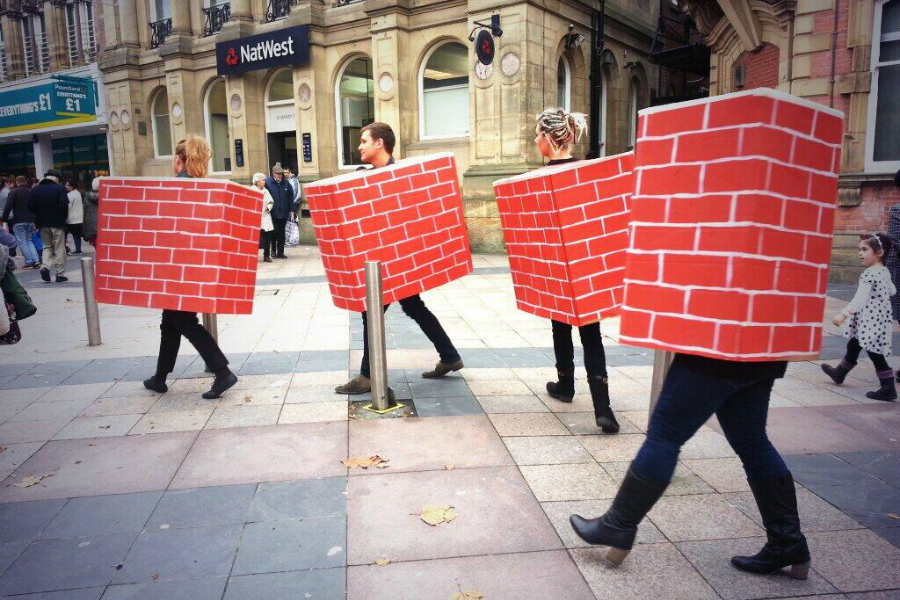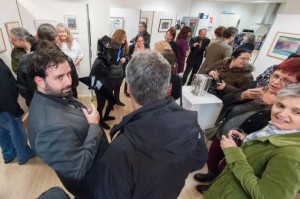Why Are Regional Arts Festivals Important?

Are regional arts festivals important, and if so, why? Emma Sumner investigates what a festival can do for a town’s community spirit…
A small industrial town in-between Liverpool and Manchester, Warrington is probably better known for having the first UK IKEA store than for having any sort of cultural offer; but since its establishment in 2010, the Warrington Contemporary Arts Festival has grown in strength. Despite positive reactions and local enthusiasm for the festival, art historian Brian Sewell — on BBC Radio 4’s You and Yours programme — declared that people in ‘somewhere like Warrington’ are not able to appreciate art.
But does Sewell really know what he’s talking about? Research of regional arts festivals in the East Midlands found that they had increased local knowledge and interest in the arts, with 70 percent of the audience stating that they would likely attend other cultural events. Surely without the influence of regional arts festivals, towns like Warrington would just be culturally barren with no thirst for the arts.
With plans well under way for a 2014 event, Warrington Contemporary Arts Festival is actively encouraging social involvement, developing new and wider audiences for its cultural activity and enhancing the image of the town. Their ethos is not about elitism, but inclusion, something which might explain Brian Sewell’s lack of understanding.
Given Sewell’s degrading comment on national media it felt important to discuss Warrington’s cultural needs. I spoke to those who organised and delivered last year’s festival, Emma Kelly, Head Curator of Python Arts, James Goodison, Arts Development Officer Culture Warrington, Lindsay Baron, a volunteer, and Emily Speed, a sculptor, performance and print artist based in the north-west.
What does the Warrington Contemporary bring to the area and its community?
Emma Kelly: The idea for the festival came from how much creative talent we realised there was in Warrington, including visual artists, performers and musicians. There was very little discussion happening between these different groups so we wanted to use the facilities we have to bring people together, as well as artists in studios in Penketh or Padgate who might feel a little more isolated. Being situated in-between two big cities (Liverpool and Manchester), artists are likely to navigate away from Warrington, but we wanted to show them the opportunities we have for them here.
Emily Speed: I feel that I’m a perfect example of someone who lives locally and grew up here, but moved away for a long time and now works in Liverpool. When you grow up somewhere like this your aspirations are not that high and you get this feeling that this isn’t for me. To have professional high quality art is really important and proves you don’t need to move to London.
Emily, what attracted you to get involved?
ESP: Anything that supports artists to produce new work is something really attractive, but the chance to work locally is something I rarely get to do. I love travelling to work in America, but it’s rare to get an offer to work locally as exotic international artists are often prized more than local artists. It’s a complicated issue, but as a local artist you don’t really get the opportunity to show to a local audience.
EK: I feel that local artist involvement is really important for the longevity of arts organisations and the festival. If we just concentrated on international artists it becomes a spectacle that comes and goes, but if local artists are the core of our offer it can help to build Warrington’s creative community.
ESP: It’s true, and by developing local talent and putting them alongside international names it really shows that you’re taking them seriously.

Lindsey, why did you want to get involved as a volunteer?
Lindsay Baron: I was working in The Gallery at Bank Quay House around the time the 2012 festival was being organising. I’ve had a lot of experience dealing with different artists, working in different venues, organising art trails and working out which artists work fits with what venue. The experience has taught me a lot and definitely helped point me in the right direction career wise. I think I would still be wondering what to do with myself if I hadn’t started volunteering.
Emily, how did you feel about taking your work out of the gallery context and into Warrington Town Centre?
ESP: In a way there is more pressure because you are closer to your peers and the judgement is harsher, but there is a real freedom in not having the massive press spotlight. When you have a very high profile show it’s stressful in different ways, but there is a joy in working regionally as you can play more which I think makes better work. It’s really nice when people challenge the work and that it’s not in the gallery and it’s just in the middle of the shops.
EK: We can’t just put on a programme and expect people to come, we have go out and form part of the town centre’s offer, this way people who have come to shop or for something to eat can see little snippets of what’s going on, like with Jeremy Bailey’s Master/Slave or Emily’s Brick Parade… no one is walking past; people are crowding round and looking to find out more.
James Goodison: A lot of people in Warrington say ‘that’s not for me,’ yet when they stand and watch what’s on offer they are amazed and are asking questions. It would be great to have the likes of Jeremy and Emily around on a regular basis; if we get more artists involved the local audience will be looking out for it to happen rather than it being a shock.
What advice would you give to other regional towns looking to increase their cultural activity?
JG: It’s so important to engage your local artists and to get them involved in the planning and preparation, to let them have some ownership and help to develop audiences. It’s great that artists exhibit work, but let them show their passion for the local arts scene too.
ESP: Yes, and I think that if a cultural offer is going to be sustainable that’s something really important.
EK: Partnerships are so important for us. If we had not come together as a team with Warrington Museum and Pyramid, the festival would not be what it is. The additional support in kind from FACT and The Bluecoat in Liverpool has really helped build the festival’s offer. You need to talk to your audience, see what they want and bring their ideas together, because if there is not a genuine love and a want to make things happen, it just becomes a programming job.
ESP: I think you have just hit on something important about sharing resources; the less money there is, the more people need to work together and share their resources, as it cuts back on costs and time. It’s all about collaboration, not competition.
What other changes have you seen the festival bring to the town?
JG: I’ve been thinking a lot recently about how art can help a town like Warrington economically. We have a big shopping centre which people can drive in and out without seeing the rest of the town. Art is a really important part in developing more of a local scene, which we are trying to do here with the cultural quarter, where we can put events on and create more of a buzz. All of the partnership work we are doing is helping to bring new audiences from Liverpool and Manchester and shows how important the festival is.
Emma Sumner





